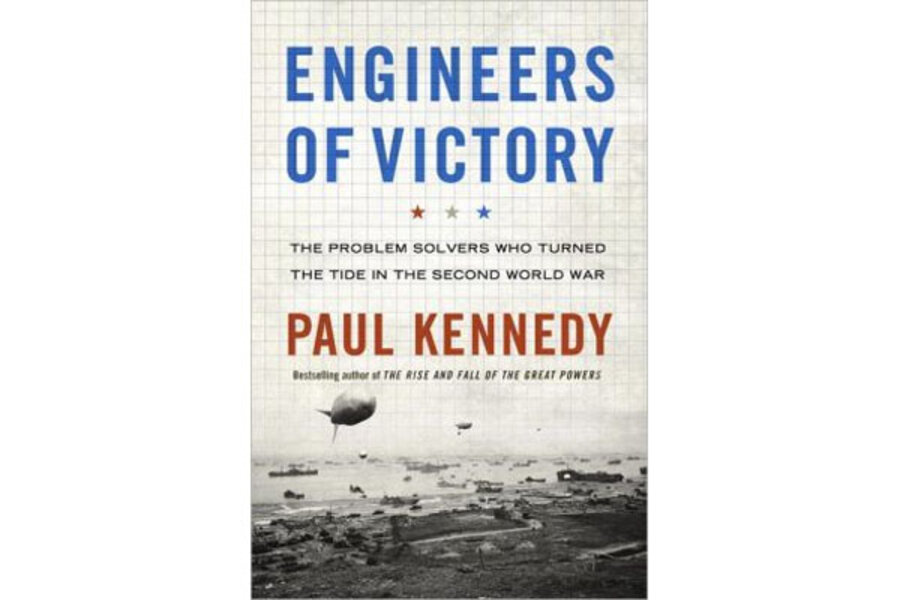Engineers of Victory
Loading...
Conventional wisdom about World War II holds that by early 1943, the Allies had turned the tide of battle and that it was largely a matter of time before the Axis Powers were defeated. The reasoning is simple: by this time the Russians had decisively defeated the Germans at Stalingrad, the British had beaten them at El Alamein and the Allies had successfully landed in North Africa. Moreover, things were looking up in the Pacific theater where the United States had crushed the Japanese Navy at Midway and was about to secure Guadalcanal after months of hard fighting.
In Engineers of Victory: The Problem Solvers Who Turned the Tide in the Second World War, Yale historian Paul Kennedy disagrees. According to Kennedy, the most critical period of the war was much later – from January 1943 to July 1944 – than is generally realized. Moreover, he attributes victory not to any single battle or major turning point but rather to the ability of the Allies to solve a handful of problems that, if unaddressed, would have prolonged the war significantly or even altered the outcome. These challenges were not addressed by grand strategists or military commanders but rather by a large number of engineers, scientists, technicians, and logistical experts whose ability to solve problems proved decisive in several key areas.
Consider, for example, the absolute necessity of getting men and supplies across the Atlantic Ocean. Absent this, it would have been impossible to supply the Russians and to accumulate the men and materiel that were necessary for the D-Day invasion. By early 1943, the U-Boats were enjoying their greatest success of the war in sinking Allied shipping. So great was the crisis that, according to Kennedy, British imports that year were less than they had been in 1939. But by that summer, the Allies had made a number of strategic and tactical changes that gave them a decisive edge in the North Atlantic.
The advances themselves – long-range and better equipped bombers to provide adequate air cover for the convoys; improved radar developed by university scientists in England and the United States; a new mortar that began as a “quirky schoolboy’s dream” but became an effective anti-submarine weapon; and the creation of far more effective naval escorts to combat the German U-boats – seem to be little more than incremental changes. But they stemmed from experience and the application of analysis to problems that needed to be solved. And taken together they became the key factors in winning the Battle of the Atlantic.
Kennedy analyzes several other problems in the same way: gaining control of the skies over Europe and Japan, blunting the speed and power of the German blitzkrieg, successfully invading enemy held territory, and fighting wars over vast distances. In every case the specific strategies and tactics differed but the common thread is the ability of Allied engineers, technicians and scientists to devise solutions that directly affected the field of battle.
The book introduces the reader to little-remembered men (and they are all men) whose ingenuity and innovations were critical. For example, the American inventor J. Walter Christie developed a suspension and chassis that was the basis for the best tank of the war, the Soviet T-34. Major Earl “Pete” Ellis laid out the basic doctrine of amphibious warfare for the U.S. Marines that became the basis for the “island hopping” campaign in the Pacific. British Major General Percy Hobart developed an array of innovative equipment – known as “Hobart’s Funnies” – to clear battlefield obstacles. British test pilot Ronnie Harker and Polish mathematician Witold Challier urged installing a Rolls Royce Merlin engine into an underperforming American plane and, by doing so, created the P-51 Mustang, arguably the best fighter plane of the war.
So unlike most histories of the Second World War, this is not a study of grand strategy, leadership, a breakthrough weapon, or a single campaign. Nor is it an encyclopedic history of the conflict. Instead, it examines the war as a series of difficult problems that the Allies solved with “human ingenuity and sympathetic initiative.”
Ultimately, this is a marvelous synthesis of a vast range material that offers a new and important way of understanding the largest conflict in human history. Superbly written and carefully documented, this book offers fresh and creative insights about the conflict to even the most expert readers. And it will become indispensable reading for anyone who seeks to understand how and why the Allies won.
Terry Hartle is senior vice president of government relations for the American Council on Education.








